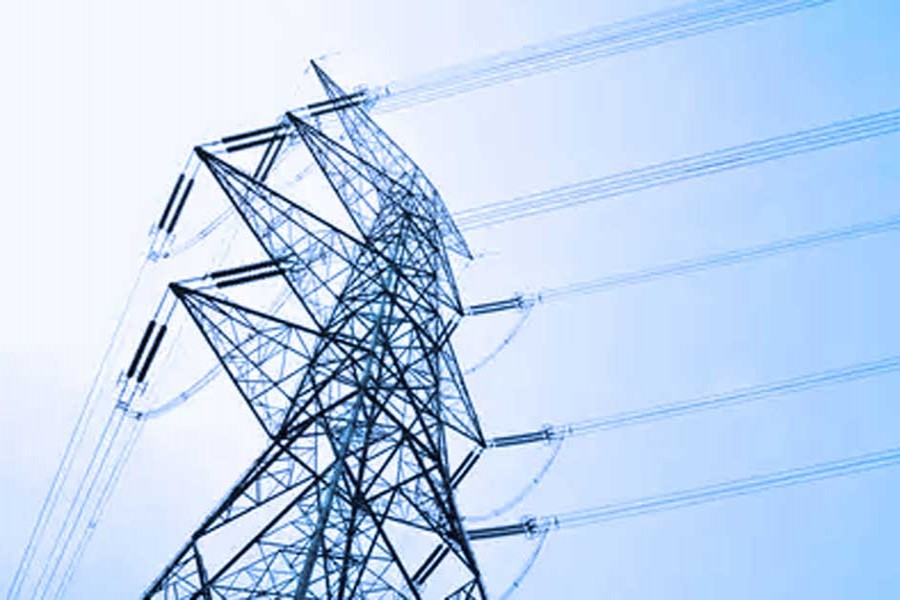Although Bangladesh now has a capacity of generating 19,000 megawatts of electricity, the actual production hovers between 8,000 and 12,500 megawatts in the absence of sufficient demand. As a result, almost half the power plants remain idle causing wastage of productive capacity.
Despite this, permissions have been granted to preferred people by the government for building power plants one after another. And this has been done without any tender under the 'Quick Enhancement of Electricity and Energy Supply (special provisions) Act, 2010. The law has outlived its logical tenure, but was extended for another three years in 2018. Contrary to standard democratic practices, it indemnifies concerned officials against prosecution for awarding contracts without tender till 2021.
There are allegations that the Power System Master Plan 2016 has not been followed while granting approval to new power plants. According to this plan, the power generation capacity in the country would reach 37,000 megawatt in 2031, whereas the peak demand would be 29,000 megawatt. Consequently, not more than 25 per cent capacity would remain idle. In contrast, about 50 per cent power plants now remain inactive. Also, a part of the installed production capacity cannot be utilised due to inadequate transmission and distribution lines, as a result of which many places of the country remain in darkness. In this backdrop, even the Power Cell, a think-tank of the Power Division, has advised the government not to give permissions for new power plants.
It may be recalled that contracts for the construction of medium-term power plants under the Power Sector Master Plan 2010 of Power Division were signed between 2011 and 2017. And the signing phase of the short-term power plants lasted up to 2013-14. But even after that, permissions were accorded for 10 oil-based plants towards the end of 2017 with the condition that production would have to commence within one year.
The combined production capacity of those plants was 1,768 megawatt. But apart from a 100 megawatt plant owned by the government, all these plants belong to the private sector. Their production cost per unit range from Tk 14 to Tk 25, which is abnormally high. None of these plants were included in the master plan.
According to available information, an additional 28,000 megawatt of electricity would be generated by six state-owned companies, the Rooppur Nuclear Power Plant, the private plants and imports by the year 2030. If production of 9,000 megawatt by the Power Development Board (PDB) is added, the generation capacity rises to 37,000 megawatt. The annual rental charge for private power plants is over Tk 900 million. Consequently, the government incurs huge losses if these are kept idle.
The government's projected growth of new electricity subscribers was 14 per cent per year. Although the estimate for residential subscribers was realistic, the desired growth of industrial subscribers has not taken place. In fact, the owners of industries themselves produce around 3,500 megawatts of electricity (captive power). Recently, permission has been accorded to another 800 industrial establishments by the government for producing captive power. Consequently, it is unlikely that new power demand for the industrial sector would shoot up soon.
However, the most serious problem bedevilling the power sector is the absence of adequate transmission and distribution lines for generated power. According to the master plan, an investment of $31 billion is needed for upgrading the transmission system. But the state-owned company in charge of transmission - Power Grid Company of Bangladesh (PGCB) - has not yet been assured of this money. According to PGB sources, the 'Power Grid Network Strengthening Project under PGCB' was supposed to start from June 2016; but it has not yet commenced. It envisaged construction of 33,000 kilometres of lines, 43 power sub-stations, and expansion of 53 sub-stations. The project has an outlay of Tk 137.03 billion. Of this, China would provide credit worth Tk 97.07 billion under its Belt and Road Initiative (BRI). After signing of agreement between the two governments, Chinese construction firm CCC Engineering (CCCE) was awarded the contract for implementation of the project. But credit for the project was approved only in July 2019. Consequently, it will be difficult to implement it within the deadline of 2021.
According to Power Division sources, about 1,320 megawatt of electricity would be added to the current generation capacity of 19,000 megawatts this year. Besides, 1,320 megawatts would come from Rampal, 2,400 megawatts from Matarbari and 2,400 megawatts from the Rooppur nuclear power plant within 2022-25. But there are doubts whether PGCB would be able to install the power transmission lines required for carrying this electricity inside the scheduled time-frame.
The six power distribution companies in the country currently have a subscriber base of 35 million. Of these, the Rural Electrification Board (REB) alone has 26 million subscribers. But the chronic problem of low voltage exists in the REB areas. The main reason for this has been a glut of subscribers compared to transformer capacity. Consequently, these are operated with excess loads. The master plan estimated that an amount of $35 billion would be needed for developing the distribution system. But the Power Division has not yet received any guarantee for such huge investment.
The government has been liberally awarding permissions for construction of power plants in the country, which breaches the scope of its own master plan for the power sector. The big question is whether there is any need at all for such import-dependent and expensive LNG-based power plants. Everything indicates an acute lack of coordination between the people at the helm of the country's power sector. They do not appear to be weighing whether the country's economy can carry the burden of such expensive electricity, which is unacceptable. A thorough review of the situation followed by corrective measures is, therefore, needed to address the huge challenges facing the power sector.
Helal Uddin Ahmed is a retired Additional Secretary and former Editor of Bangladesh Quarterly.


